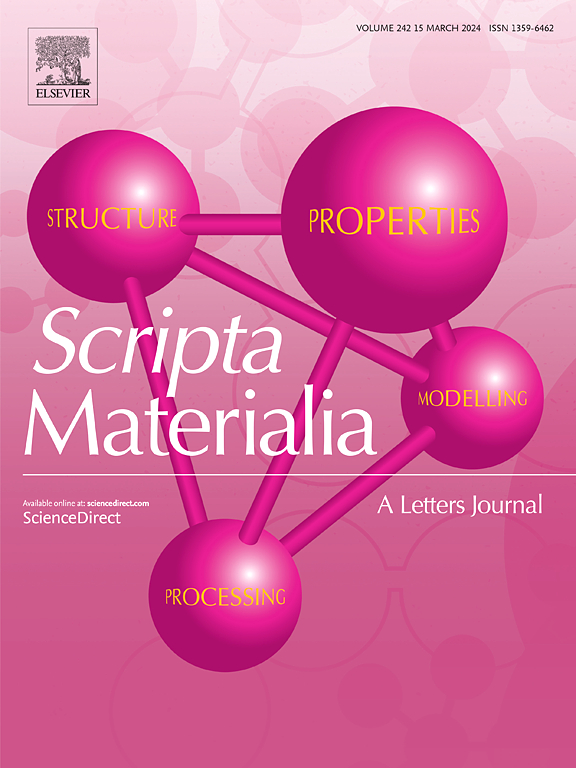孪生机制:从层错到微孪生转变的直接观察
IF 5.3
2区 材料科学
Q2 MATERIALS SCIENCE, MULTIDISCIPLINARY
引用次数: 0
摘要
镍基高温合金从层错到微孪晶的转变机制在高温蠕变行为中起着关键作用,但仍存在争议。本文采用像差校正扫描透射电镜(STEM)直接观察了在815°C/490 MPa蠕变过程中超晶格外源层错(sesf)在原子尺度上向微孪晶的演化过程。过渡区表现出微孪晶对称和残余叠层断层错位共存,证实了a/6 <的顺序剪切;112比;肖克利部分位错和随后的原子重排驱动sesf到微孪晶的转换。值得注意的是,微孪晶完全起源于γ′相,没有证据表明是母体发起的孪晶。这些发现在实验上验证了Kolbe原子重排机制,同时挑战了在类似系统中提出的矩阵驱动孪晶形成的假设。研究结果为理解变形路径和设计抗蠕变合金提供了基础框架,特别是在极端热机械条件下要求微结构稳定性的应用。本文章由计算机程序翻译,如有差异,请以英文原文为准。

A twinning mechanism: Direct observation of the transition from stacking faults to Microtwins
The transition mechanism from stacking faults to microtwins in nickel-based superalloys remains debated despite its critical role in governing high-temperature creep behavior. Here, we directly observe the atomic-scale evolution of superlattice extrinsic stacking faults (SESFs) into microtwins during creep deformation at 815 °C/490 MPa using aberration-corrected scanning transmission electron microscopy (STEM). Transitional regions exhibit coexisting microtwin-like symmetry and residual stacking fault misalignment, confirming that sequential shearing of a/6 < 112> Shockley partial dislocations and subsequent atomic rearrangement drive SESF-to-microtwin conversion. Notably, microtwins exclusively originate within the γ′ phase, with no evidence of matrix-initiated twins. These findings experimentally validate the Kolbe atomic rearrangement mechanism while challenging hypotheses proposing matrix-driven twin formation in analogous systems. The results provide a foundational framework for understanding deformation pathways and designing creep-resistant alloys, particularly for applications demanding microstructural stability under extreme thermomechanical conditions.
求助全文
通过发布文献求助,成功后即可免费获取论文全文。
去求助
来源期刊

Scripta Materialia
工程技术-材料科学:综合
CiteScore
11.40
自引率
5.00%
发文量
581
审稿时长
34 days
期刊介绍:
Scripta Materialia is a LETTERS journal of Acta Materialia, providing a forum for the rapid publication of short communications on the relationship between the structure and the properties of inorganic materials. The emphasis is on originality rather than incremental research. Short reports on the development of materials with novel or substantially improved properties are also welcomed. Emphasis is on either the functional or mechanical behavior of metals, ceramics and semiconductors at all length scales.
 求助内容:
求助内容: 应助结果提醒方式:
应助结果提醒方式:


